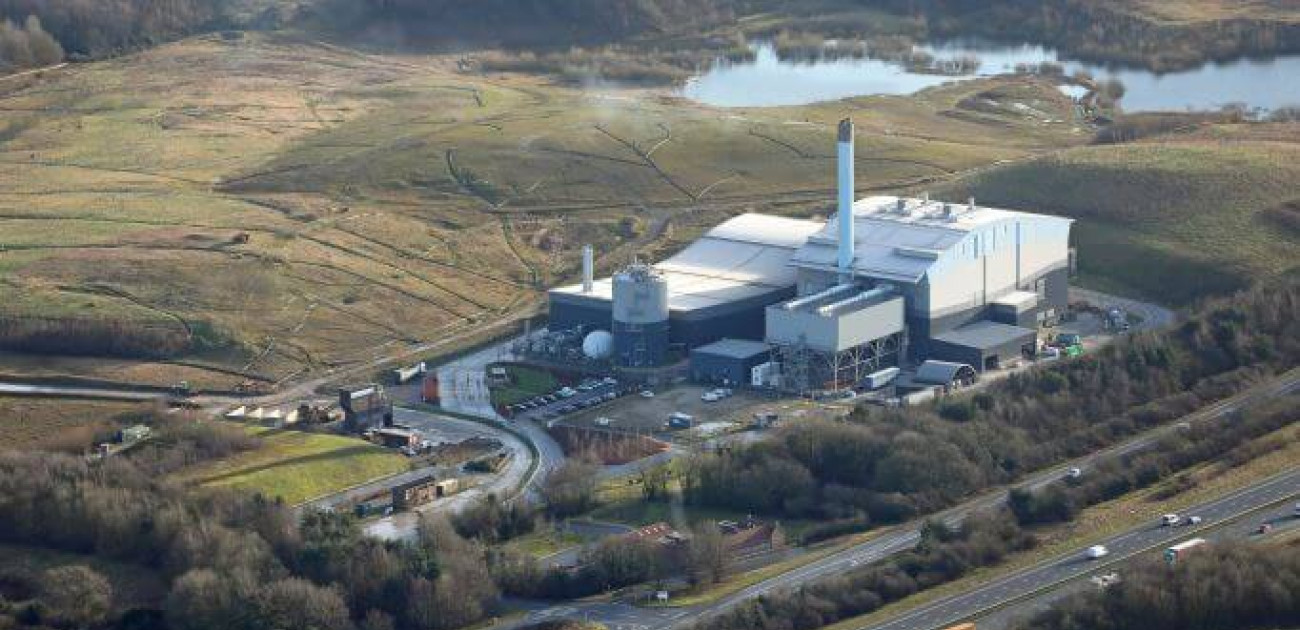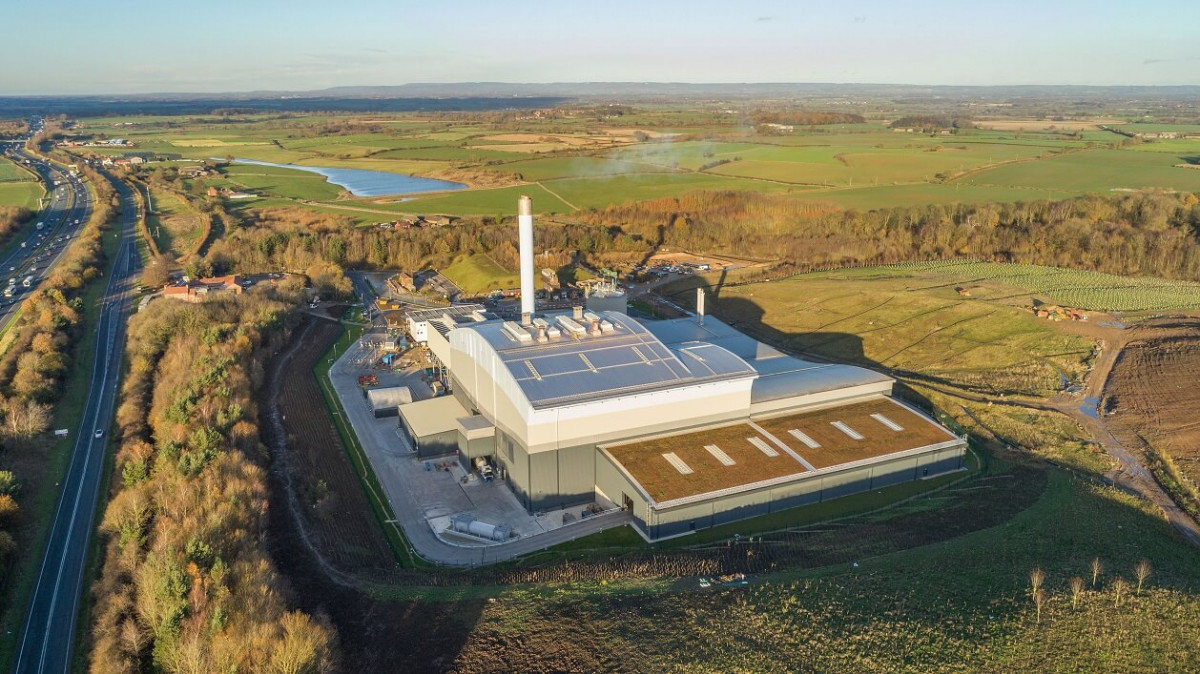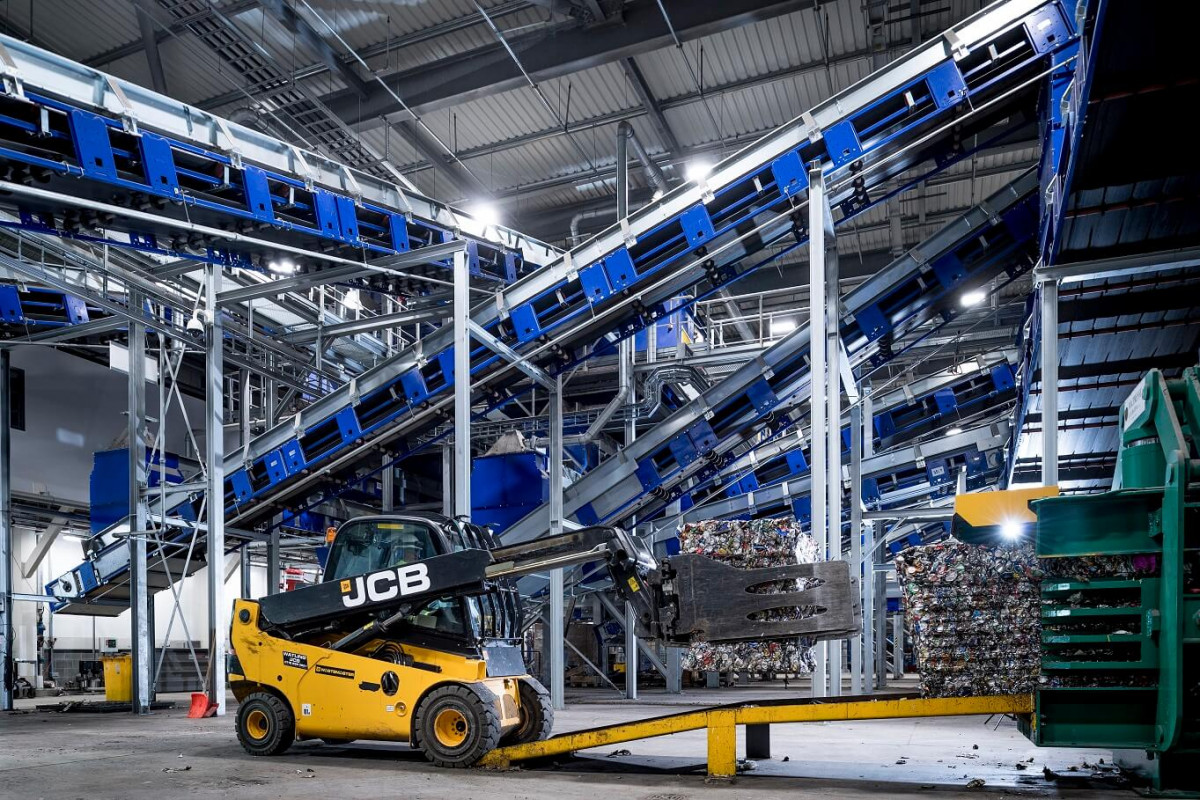03 November 2022
Axel and Sophie's Visit To Allerton Park Waste Recovery Park - 2022
Axel and Sophie visited the Allerton Park Waste Recovery Site to start our journey to understanding what happens to our rubbish - at Steenbergs and at home. The plant diverts almost all local waste from landfill (93%) through energy recovery.

For some time, Sophie and I have been meaning to visit local waste processing sites to get to understand where our waste and recycling goes, and how it is dealt with.
We began this journey on 27th September by visiting the Allerton Waste Recovery Park, then went to Harewood Whin Waste Transfer Site later; the blogs are written the other way round as it feels more logical to me.
It is just down the road from our home in Boroughbridge. We watched it being built, opened in March 2018, and can see it looming on the eastern side of the A1 – its big tower is the most obvious landmark. It was built right beside the old landfill site that has now been filled over, has gas vents and the methane is being collected by the operators, FCC Environment.
We arrived at their visitor centre and were met by our hosts for the afternoon. We had a lively discussion about recycling, energy recovery and black bin bag waste, and what Allerton Waste Recovery Park actually does.
This facility is operated by Amey for North Yorkshire County Council and York City Council and takes the black bin bag waste for the whole of North Yorkshire.

So, our black bin bags, i.e., not the recycling, is collected from our house every other week and when the bin lorry is full after a couple of streets, it goes down to the facility – roughly 2 miles from us – gets weighed in, then tips its waste in the waste bunker. About 80% of the waste is domestic and the remaining 20% is trade waste. This rubbish is under negative air pressure, which keeps the smells in the building but when you go into the plant you are hit by the powerful stench of the rubbish, but then this is all about rubbish and the smell isn’t that bad really, just there’s a lot of it.
The waste, roughly 700 tonnes each and every day (about three quarters of its capacity)*, starts its process by being grabbed by cranes and dropped into the mechanical sorting system, which is an extensive system of conveyors, trommels (big rotating ‘sieves’), magnets and infra-red detectors that pick out recyclable stuff, followed by a hand sort that picks out things that have got into the wrong pile of recyclates. This process sorts the waste into types of recyclable material (plastic, magnetic metals - mainly stainless teel, aluminium, paper and card) and these are then baled and palletised for onward shipping to recycling companies.

Before anyone says what’s the point of recycling if Allerton Waste Recovery Park sorts out the recycling, it is about qualities of recyclate. The recycling we sort out at home or work is the higher quality materials, so it is cardboard without food waste on it, washed out plastics and glass jars, etc. The grubby recycling like cardboard pizza boxes, plastic tubes with materials still in them (e.g., toothpaste or face creams) can be sorted out by Allerton Waste Recovery Park and go to recyclers who will accept lower grade recyclate.
The magnetic ferrous materials are pulled out by magnets, the aluminium by an eddy current separator and the recyclable plastic with an infrared light beam linked to an air jet. Oversized card and paper are manually extracted from a conveyor belt, then baled and sent to paper recyclers, while smaller sized paper is shredded and goes to the anaerobic digester.
Whereas not enough recyclate is coming out of the Allerton Waste Recovery Park, it does still pull out over 3,000 tonnes of material for recycling every year. At a maximum, this could be 6,000 tonnes or more of recyclable material - that's a lot of recoverable commodity that we're chucking away in North Yorkshire that still has value, now that is wasteful.
The smaller bits of material are mainly organic waste, mainly food, is collected early on and goes into the anaerobic digester. This system using microbial activity to generate methane which is collected and used to generate power for the plant itself. The end digestate is not suitable for composting because it comes from mixed waste source so is transferred into the Energy for Waste facility. There is an intention for regular domestic food waste collection across North Yorkshire and then this could go directly into the anaerobic digester and the end product used for compost, but currently each borough collects differently so this cannot be done as of now.
The end material which is basically low-grade plastics (single use plastics film and shopping bags) and seemed to be a lot of crisp packets, supermarket plastic bags and a random wheel from a pushchair. This non-recyclable waste and the leftover organic waste from the anaerobic digester then get burned at a minimum of 850C but mostly at above 1000C. This generates heat that heats up steam in closed tubes that generates power via a 30 MW steam turbine. So, Allerton Waste Recovery Park is a net exporter of electricity to the local grid, creating enough electricity for over 40,000 homes. The steam is cooled, condensed, and sent back to the incinerator in a constant loop. The bottom fly ash from the incinerator is collected, run via a magnet to remove metal filings for recycling and the remaining aggregate is used in the construction industry.
Urea is injected into the furnace to reduce NOx gases. The flue gases that are generated are ‘cleaned’ by adding activated carbon and hydrated lime to neutralize acids, pull out heavy metals and organic chemicals, with particulates filtered out on a series of bag filters that are shaken to produce an alkaline particulate. This is sent away and mixed with acidic residue from other processes and landfilled. The ‘cleaned’ flue gas is pushed up the chimney and any ‘smoke’ is steam and the air is monitored by the company and the Environment Agency on a continuous basis – the air coming out is cleaner than the air above the A1 motorway a few hundred yards to the west of the facility.

Overall, the whole system was impressive and set our minds to rest that our business and domestic rubbish was not going to landfill, with around 93% diverted from landfill and about 98% of the processed rubbish being burned for energy. Not enough (less than 2%) is being sorted for recycling or anaerobic digestion, but it is difficult to tell whether this is because recycling is locally at a higher level than forecast when the plant was built, or if the plant underperforms for sorting out recyclable material.
What did hit us was how much of the general rubbish is plastic, a seemingly endless supply of plastic, much of which cannot be recycled. This system is good and diverts our waste from landfill, but really we just need to consume a lot less and not rely on these sorts of plants, plus retailers need to reduce their reliance on the public and the state to pick up the cost for their excessive use of packaging. Essentially, we the people are paying for their environmental badness, a cost they should be paying for.
Overall, the learning point for us was that we really do generate a lot of rubbish, so we must stop buying what we don’t need and making sure it comes in as little packaging as possible – that’s the reduce part of the waste pyramid. This is our responsibility, and ours alone, but we can put some pressure on the retailers to reduce their packaging.
* This is the figure we have been given. However, it does not tally with the 70,000 tonnes of black bin bag waste that goes through Harewood Whin, which is closer to 200 tonnes a day. There will be some that goes direct into Allerton Waste Recovery Park and Harrogate and York's trade waste, plus black bin bag waste from other waste transfer sites.




